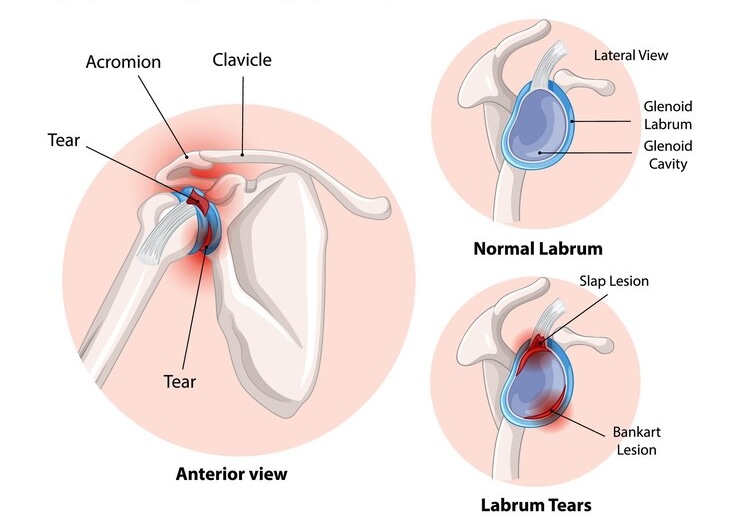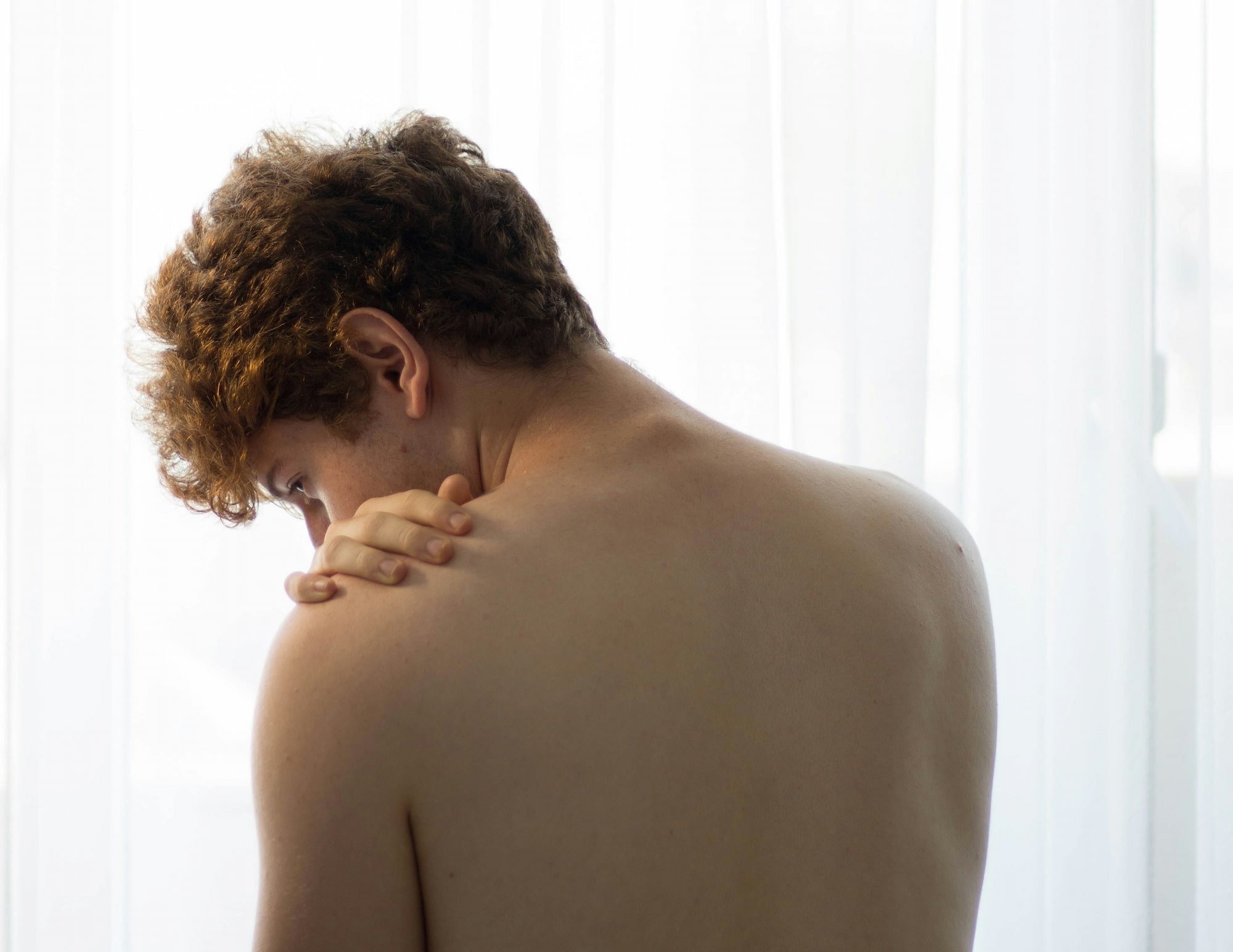SLAP stands for “Superior Labrum Anterior to Posterior,” indicating the location of the tear in the upper part of the labrum where the biceps tendon attaches. This injury disrupts the function of the labrum and can cause instability and pain in the shoulder.
What causes a SLAP tear?
SLAP tears can result from either acute trauma or repetitive shoulder motion. Some common causes include:
- A direct blow to the shoulder, falling onto an outstretched arm, or a sudden forceful pull (e.g., trying to catch a heavy object).
- Repetitive motion, common among athletes, especially those involved in overhead sports like baseball, tennis, or weightlifting.
- Over time, the labrum may wear down, making SLAP tears more common in individuals over 40. Age-related SLAP tears typically develop slowly due to gradual degeneration rather than a specific injury.

What symptoms would I notice?
The symptoms of a SLAP tear can be subtle and are often deep within the shoulder, making them hard to identify. Symptoms can include:
- A painful popping, clicking, or catching sensation in the shoulder
- Discomfort during overhead movements or reaching backward
- Shoulder pain while throwing or lifting objects
- A deep ache in the shoulder, often challenging to pinpoint
If the tear affects the biceps tendon, pain may also be felt at the front of the shoulder, and pressing on this area may cause tenderness.
How is a SLAP tear diagnosed?
Diagnosing a SLAP tear involves a detailed medical assessment, often beginning with a visit to your GP who may perform a physical exam. While an X-ray may help rule out other issues, an MRI with arthrogram (with injection of contrast dye into the joint) is required for a definitive diagnosis, as it provides clearer visibility of the shoulder’s soft tissue structures. In some cases, the SLAP tear is identified during arthroscopic surgery.
Treatment options
For many, non-surgical options provide effective relief; however, if non-surgical methods do not alleviate symptoms, surgery may be necessary.
Non-operative treatments
- Initially, resting the shoulder can help reduce inflammation and ease symptoms.
- A targeted exercise program to strengthen surrounding muscles, restore range of motion, and gradually reintroduce overhead activities.
- Anti-inflammatory medications can alleviate pain and reduce swelling in the shoulder.
- Regular ice application can help minimise inflammation.
- Cortisone injections to reduce inflammation and provide temporary relief, allowing for improved participation in physiotherapy.
Operative treatments
- Debridement
For minor tears, the damaged portion of the labrum can be shaved away, smoothing the area.
- SLAP Repair
For larger tears in young patients, the labrum is reattached to the socket using sutures, a procedure typically suited for active individuals.
- Biceps Tenodesis
In cases involving the biceps tendon, this procedure moves the tendon attachment, reducing strain on the SLAP area. This option is often chosen for patients over 40 or those with additional biceps tendon issues.
- Biceps Tenotomy
In older adults it is safe and effective to simply cut the biceps tendon in the shoulder joint without further surgery to reattach it elsewhere. SLAP lesions in this age group are usually debrided rather than repaired.
- See the biceps tendon and arthroscopic shoulder stabilisation pages to learn more
Managing a SLAP Tear surgically with Dr Lambers
If surgical intervention is required, Dr Lambers can provide treatment for your SLAP tear and related shoulder procedures. Dr Lambers uses arthroscopic techniques, which minimise tissue damage and typically result in quicker recovery times compared to open surgeries.

